The Everest Base Camp Trek is a life-changing adventure that takes you deep into the heart of the Himalayas, guiding you to the base of the world’s tallest peak, Mount Everest (8,848.86m / 29,031 ft). Set in Nepal's Khumbu region, this trek combines awe-inspiring mountain vistas, spiritual experiences, and the warmth of Sherpa hospitality.
From the lively village of Namche Bazaar to the serene Everest Base Camp (5,364m), this trek offers an unforgettable journey for both seasoned trekkers and first-time adventurers.
With Places Nepal, you’ll not only trek to Everest Base Camp—you’ll immerse yourself in the beauty and culture of the Himalayas with expert guides ensuring safety and comfort every step of the way.
Our carefully crafted itinerary, including acclimatization days, maximizes your experience while minimizing altitude risk.
Your Journey Includes:
A thrilling flight to Lukla, followed by trekking through vibrant Sherpa villages like Phakding and Namche Bazaar.
Visits to iconic landmarks, including the Tengboche Monastery and the mighty Everest Base Camp.
A sunrise trek to Kala Patthar for the most stunning panoramic views of Everest and surrounding peaks.
Accommodation in cozy teahouses, offering both basic comforts and local warmth, with delicious meals to fuel your trek.
Trek Highlights:
Majestic 8,000-meter peaks like Everest, Lhotse, Nuptse, and Ama Dablam.
The mesmerizing Khumbu Glacier and Icefall.
Rich Sherpa culture, including visits to monasteries and schools.
Vibrant prayer flags, mani walls, and Buddhist stupas marking sacred ground.
Trekking Information:
Difficulty: Moderate to strenuous; previous trekking experience is helpful but not essential.
Altitude: Everest Base Camp (5,364m), Kala Patthar (5,545m).
Best Time to Go: Spring (March to May) and Autumn (September to November) for clear skies and excellent visibility.
Permits: Required; handled by us for a hassle-free trek.
Food Options During the Everest Base Camp Trek
Food on the Everest Base Camp (EBC) trek is both nourishing and diverse, catering to both local tastes and international preferences.
The most common meal on the trail is the beloved dal bhat — a traditional Nepali dish of steamed rice, lentil soup, and seasonal vegetables. It’s a staple among trekkers for good reason: it’s nutritious, energy-rich, and often comes with unlimited refills.
What to Expect on the Menu
Teahouses along the EBC route offer a surprising variety of food options. You’ll find:
Nepali meals: dal bhat, momos (dumplings), thukpa (noodle soup)
Western dishes: pancakes, toast, eggs, pasta, fried rice, pizza, and even burgers
Soups and snacks: garlic soup (great for altitude), noodle soup, and French fries
While meat is available at some teahouses, it’s advisable to limit your intake above Namche Bazaar, as refrigeration becomes unreliable at higher altitudes.
Trekking Nutrition Tips
To maintain your energy levels, stick to carbohydrate-rich meals like dal bhat. These meals provide the fuel your body needs for long trekking days. Additionally:
Drink plenty of fluids such as herbal teas, lemon tea, and boiled water to stay hydrated
Avoid excessive meat, dairy, caffeine, alcohol, and sugary drinks, especially at higher elevations
Pack high-energy snacks like protein bars, trail mix, and dried fruit for the trail
Please note: while our trekking package includes standard meals (breakfast, lunch, and dinner), extra items such as drinks, desserts, and alcoholic beverages are not included.
Luggage Policy
We provide one porter for every two trekkers, and each porter can carry a combined load of up to 18 kg. This means each trekker is allowed to bring a maximum of 9 kg of gear.
Packing Tips
Use a duffel bag of 60 liters or larger for your main luggage
Carry a daypack with your essentials: water, camera, snacks, and valuables
Any extra luggage can be stored at your hotel or at our office in Kathmandu free of charge
We prioritize the well-being of our porters, so please pack only what’s necessary.
Required Permits for the Everest Base Camp Trek
To trek to Everest Base Camp, you need three permits:
Sagarmatha National Park Entry Permit
Khumbu Pasang Lhamu Rural Municipality Entrance Card
TIMS Card (Trekkers' Information Management System)
Permit Costs
For Foreign Nationals:
Sagarmatha National Park Permit: NPR 3,000
Khumbu Pasang Lhamu Entrance Card: NPR 3,000
For SAARC Nationals:
TIMS Card: NPR 600
Sagarmatha National Park Permit: NPR 1,500
Khumbu Pasang Lhamu Entrance Card: NPR 2,000
All required permits are included in our package, so you won’t have to worry about arranging them yourself.
Essential Trekking Facilities
Water
Staying hydrated is vital. While bottled water is sold along the trail, we recommend using refillable bottles and purifying your water with:
This approach is more sustainable and eco-friendly.
Communication
Local SIM cards are available in Kathmandu, and basic network coverage is available up to certain points on the trail.
However, connectivity can be limited at higher elevations. Our team maintains daily communication with your trek leader to ensure safety and support.
Travel Essentials for Nepal
Visa Information
Most foreign travelers can obtain a visa on arrival at Tribhuvan International Airport in Kathmandu. You'll need:
A valid passport (at least six months remaining)
Two passport-sized photos
Visa fee (payable in USD or other major currencies)
Visa Fees:
15-day visa: USD 30
30-day visa: USD 50
90-day visa: USD 125
You can stay up to 150 days per calendar year. Extensions are available through the Department of Immigration in Kathmandu.
Travel Insurance
Comprehensive travel insurance is mandatory for the Everest Base Camp Trek. Your policy must cover:
Trekking up to 5,500 meters
Emergency evacuation by helicopter
Medical expenses and trip cancellation
Confirm with your provider that these features are explicitly included in your plan before departure.
Currency and Payments
Bring major foreign currencies like USD, GBP, or EUR, and exchange them at authorized money changers in Kathmandu for the best rates.
While ATMs are available in Kathmandu and Namche Bazaar, they may have withdrawal limits and fees. Once on the trail, most transactions are cash-only, and Nepalese Rupees (NPR) are the standard currency.
Estimated Extra Expenses
Although your package covers accommodation and meals, you’ll need some cash for personal expenses. Budget around USD 15 per day for:
Being prepared with extra cash ensures a smoother and more enjoyable trekking experience.
Best Trekking Seasons and Weather Overview
The ideal times for trekking to Everest Base Camp are:
🌸 Spring (March–May)
🍁 Autumn (September–November)
☀️ Summer/Monsoon (June–August)
Hot and humid at lower altitudes, potential rain
Day: 25–27°C | Night: 5°C
Expect slippery trails, cloudy views, and possible flight delays.
❄️ Winter (December–February)
Cold and dry, fewer crowds, stunning snow-covered peaks
Day: 10–15°C | Night: -15 to -20°C
Requires proper gear and experience. Snowstorms are possible at high altitudes.
Places Nepal Treks and Expedition offers treks in all seasons, but we strongly recommend spring and autumn for the most reliable and rewarding experiences.
Flight Delays and Contingency Planning
Flights to Lukla, the gateway to Everest, are often delayed or canceled due to unpredictable weather. If this occurs:
You’ll be rescheduled to the next available flight.
Alternatively, a helicopter transfer is possible (USD 500–1,000 per person).
We advise adding at least 2 buffer days to your itinerary to accommodate such delays.
Our team at Places Nepal Treks and Expedition handles these logistics to minimize disruption to your schedule.
Typical Trekking Day
Every trekking day is a blend of adventure, culture, and natural beauty. Here's a typical daily routine on the trail:
7:00–8:00 AM: Breakfast at the teahouse
8:30 AM–12:00 PM: Morning hike with scenic views
12:00–1:00 PM: Lunch stop and rest
1:30–3:30 PM: Afternoon hike to the next village or lodge
4:00–6:00 PM: Free time to explore, rest, or journal
6:30 PM: Dinner followed by a guide’s briefing for the next day
Evenings are relaxed, often spent chatting with fellow trekkers, learning Nepali phrases, or playing cards. Your luggage is carried by our porters, so you only need a daypack with essentials.
Trip Conclusion
Farewell Dinner
After your return to Kathmandu, Places Nepal Treks and Expedition will host a celebratory farewell dinner.
This evening of cultural cuisine and stories also includes a trek achievement certificate to commemorate your journey.
Departure Assistance
On your departure day, we’ll provide a private transfer to Tribhuvan International Airport.
To help us coordinate, please share your hotel name, room number, and flight departure time in advance. We hope this is just the beginning of your many adventures in Nepal.
Trek Bookings with Confidence
Safe & Secure Reservations
We are a government-authorized trekking agency and proud members of the Trekking Agencies’ Association of Nepal (TAAN) and the Nepal Mountaineering Association (NMA).
To reserve your Everest Base Camp trek, a 10% advance payment is required, payable via bank transfer or secure online portal.
📄 What We Need After You Book
Within a week of booking, please send us:
You can settle the remaining balance upon arrival in Nepal using cash, bank transfer, Wise, Western Union, or credit card.
We’ll provide a detailed breakdown of all available payment methods.
Private Treks & Group Support
All treks are private by default, meaning you’ll never be grouped with strangers. For larger groups (12+ trekkers), we assign an additional assistant guide to maintain personalized attention and safety.
Last-Minute Bookings
Planning spontaneously? As long as you have your key documents—passport, visa, and insurance—ready, we can help you confirm a last-minute Everest Base Camp trek. Reach out, and we’ll handle the logistics.
Flexible Schedules
Fixed departures are available, but we also offer flexible trek dates to fit your personal travel plans. Just let us know your availability, and we’ll tailor an itinerary that works for you.
Extend Your Adventure
Nepal has more to offer beyond Everest. Before or after your trek, consider one of these exciting extensions:
🚁 Helicopter flight over the Langtang Valley
🛶 White-water rafting on the Trishuli River
🪂 Paragliding in Pokhara
🐘 Wildlife safari in Chitwan or Bardia National Park
We’re happy to help you explore even more of this incredible country.
Experienced, Local Team
Your trek is led by licensed, highly trained guides and Sherpas from the Himalayan region. They’re certified in wilderness first aid and eco-friendly trekking, with years of experience navigating high-altitude trails.
We prioritize their well-being with fair pay, insurance, meals, and lodging, ensuring they’re just as well-prepared as you are.
Responsible Trekking Practices
We’re committed to sustainable travel. That means:
Encouraging refillable water bottles
Supporting locally owned lodges
Following Leave No Trace principles
Partnering with the Kathmandu Environmental Education Project (KEEP)
Trekking responsibly helps preserve Nepal’s natural beauty and supports local communities.
Tipping Guidelines
Tipping is customary in Nepal and a great way to show appreciation for your guide and porter team. Tips are usually offered at the end of the trek, often pooled by the group.
There’s no strict rule, but the amount typically reflects service quality, trek length, and your satisfaction. A generous gesture goes a long way.
Can Beginners Do the Everest Base Camp Trek?
Absolutely. With the right mindset and preparation, even beginners can take on this challenge.
Our guides are patient, professional, and highly experienced, ensuring your safety throughout the journey. We strongly encourage beginners to undergo pre-trek physical training, such as hiking, cardio, and strength exercises to build stamina.
You’ll be supported every step of the way by a team that understands how to help first-time trekkers succeed.
Trek Packages for Every Style
Whether you’re looking for a classic experience, a more luxurious approach, or a shorter itinerary, we’ve got a package that suits your style:
- Standard EBC Trek (14 Days): A complete Everest experience with cozy teahouse stays, meals, permits, guides, and porters. Perfect for traditional trekkers.
- Luxury EBC Trek (14 Days): Stay in premium lodges with added comforts like private bathrooms, hot showers, and upgraded meals—ideal for travelers seeking extra comfort.
- EBC Trek + Helicopter Return (12 Days) : Trek to base camp and enjoy a helicopter ride back to Lukla. A great choice for those with limited time.
- Fully Customized Trek: Want a unique route, longer rest days, or side trips? We’ll create a custom itinerary that fits your fitness, preferences, and travel schedule.
What is the Trekking Distance from Lukla to Everest Base Camp?
The trek from Lukla to Everest Base Camp (EBC) spans approximately 65 kilometers (40 miles) one way, making the round trip about 130 kilometers (80 miles).
Most trekkers complete the journey in 11 to 14 days, which includes essential acclimatization stops along the way.
Two key rest days are typically spent in:
These acclimatization stops are vital to reducing the risk of altitude sickness and ensuring your body adapts to the elevation gains safely.
Preparing for Your Everest Base Camp Adventure
Physical Fitness
Reaching Everest Base Camp is a rewarding but demanding challenge. Trekkers should be prepared for long hours of walking on varied terrain, often at high altitudes.
To get trek-ready, consider the following training tips:
Cardio exercises: hiking, jogging, cycling, or stair climbing help build stamina
Strength training: focus on your legs, core, and shoulders to handle backpack weight and rugged trails
Endurance hikes: practice walking with a loaded daypack to simulate real conditions
Consistency in training not only boosts your physical capability but also strengthens your mental resilience for the trek.
Essential Gear and Equipment
Packing smart is essential for both comfort and safety. Here’s a breakdown of what you’ll need:
Clothing
Layered thermal clothing: base layers, fleece or down mid-layers, and a waterproof outer shell
Warm hat, gloves, and neck gaiter
Quick-drying shirts and trekking pants
Footwear
Sturdy, waterproof trekking boots with ankle support and good grip
Camp shoes or sandals for evenings
Sleeping Gear
Accessories
Polarized sunglasses with UV protection
Sunscreen and SPF lip balm
Reusable water bottles or hydration bladder
Water purification tablets or filter
High-energy snacks for trail nutrition
Trekking poles for added stability
Headlamp with extra batteries
Basic first aid kit with blister care and medications
Luggage and Porter Service
Your main luggage will be carried by a porter, allowing you to trek with just a light daypack. Here are the porter service guidelines:
One porter per two trekkers
Combined luggage weight per porter: 18 kg (9 kg per trekker)
Bring a small backpack for your water, camera, sunscreen, snacks, and valuables
Any excess luggage can be securely stored at your hotel or our office for free
We ensure our porters are never overburdened and treated with care and respect. Please pack responsibly and only bring the essentials.

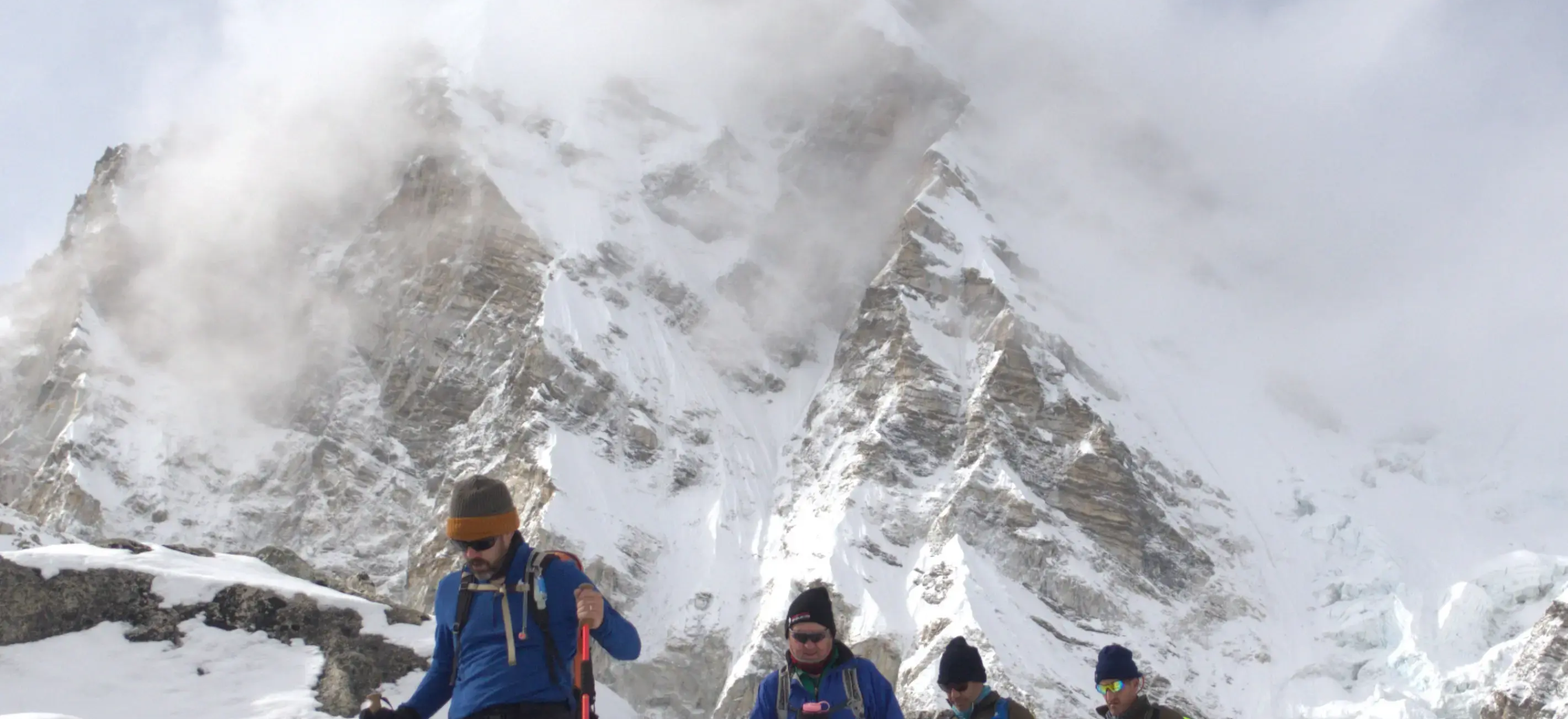










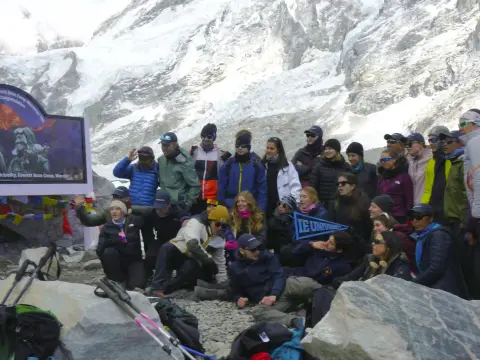
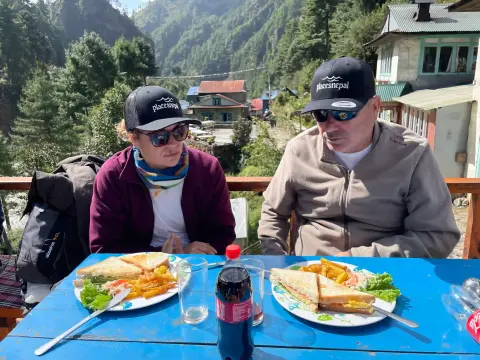
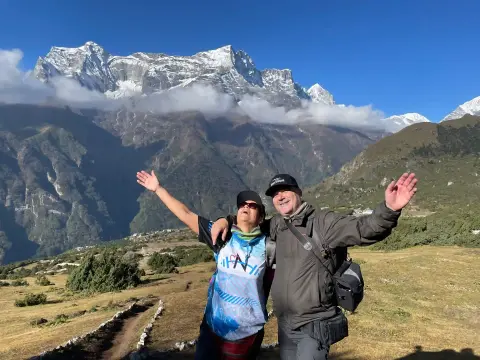
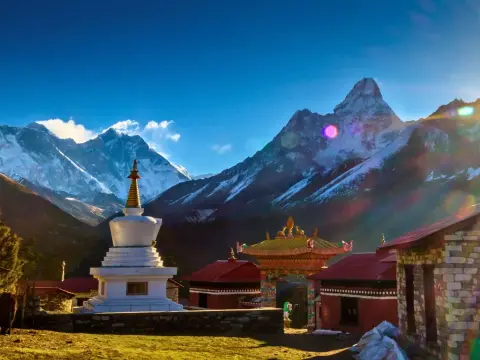
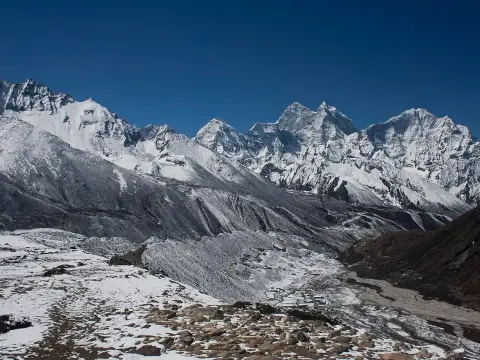
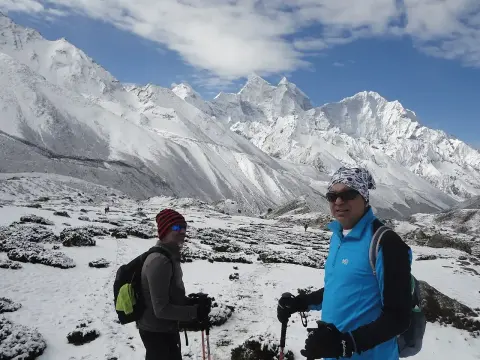



 General FAQs
General FAQs -webp.webp) Who Can Trek Everest Base Camp?
Who Can Trek Everest Base Camp?  Best Time to Trek Everest
Best Time to Trek Everest  Everest Trek Difficulty
Everest Trek Difficulty  Packing and Prep
Packing and Prep  Health and Safety
Health and Safety  Travel Insurance
Travel Insurance 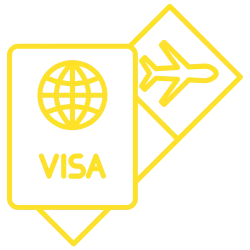 Arrival and Visas in Nepal
Arrival and Visas in Nepal -webp.webp) Trek Permit Required
Trek Permit Required  Everest Trek Guide
Everest Trek Guide  Accommodation
Accommodation  Communications on the Trek
Communications on the Trek  Foods on Everest Trek
Foods on Everest Trek  Everest Trek Weather
Everest Trek Weather  Temperatures on Everest Trek
Temperatures on Everest Trek -webp.webp) Booking and Cancellation
Booking and Cancellation  Everest Trek Cost
Everest Trek Cost -webp.webp) Transportation
Transportation 


























































